Geochemical underpinnings of Australia's offshore hydrocarbon prospectivity
Marita Bradshaw A , Dianne Edwards A , Chris Boreham A , Emmanuelle Grosjean A , Jennifer Totterdell A , Thomas Bernecker A and Andrew Heap AGeoscience Australia
The APPEA Journal 54(1) 415-420 https://doi.org/10.1071/AJ13041
Published: 2014
Abstract
Molecular and isotopic analyses of oils and gases can provide information on the depositional environment, maturation and age of their source rocks, and the post expulsion history of the hydrocarbons generated. Source rock analyses can determine their potential to generate hydrocarbons of varying type over specific thermal ranges, as well as demonstrating the strength of oil- or gas-to-source correlations. Together, this geochemical interpretation can provide insights about the extent of petroleum systems and can help delineate the relationships between hydrocarbon occurrences in a basin and across the continent. Oils that do not fit the well-established framework of oil families and Australian petroleum systems point to new source rock fairways. Examples include vagrant oils with lacustrine affinities found at various locations on the western Australian margin. Other examples are oil occurrences in the Gippsland Basin whose geochemical signatures contrast with the dominant non-marine oils, supporting the existence of a viable marine source rock facies. In under-explored and frontier basins, geochemical analyses of potential source rocks can provide key evidence to underpin new exploration efforts. For example, the recent acreage uptake in the Bight Basin was supported by Geoscience Australia’s recovery and analysis of oil-prone marine source rocks, and in the northern Perth Basin by new geochemical analysis extending the distribution of Lower Triassic Hovea marine source rocks offshore. Geoscience Australia has now embarked on a regional petroleum geological program that includes a national source rock study aimed at identifying and characterising Australia’s hydrocarbon sources, families and systems.
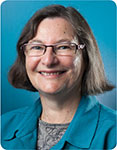
Marita Bradshaw is senior science adviser, Energy Division at Geoscience Australia. Her work has focused on the petroleum prospectivity of Australia and has included leading a program of new data acquisition in offshore frontier basins. In addition to her work with the government, she has worked as a petroleum geologist for ESSO Australia and WMC. She has a BSc from the University of Sydney and a PhD from the University of Western Australia, and was awarded the Lewis G Weeks gold medal for contributions to petroleum exploration by APPEA in 2007. Member: PESA, GSA, SEAPEX. Marita.Bradshaw@ga.gov.au |

Dianne Edwards is a senior petroleum geochemist at Geoscience Australia and is presently involved with the Offshore Acreage Release and Promotion Section. She is also undertaking organic geochemical studies on unconventional petroleum (shale gas and tight gas) as part of the Onshore Hydrocarbons project, and hydrocarbon migration studies in the Gippsland Basin as a member of the CCS Gippsland Project. Dianne has extensive experience on the petroleum systems of the North West Shelf and Canning and Otway basins. She received her BSc Hons. degree in geology and MSc in organic petrology and organic geochemistry from the University of Newcastle-upon-Tyne, UK. Dianne was awarded her PhD from the University of Adelaide. Dianne.Edwards@ga.gov.au |
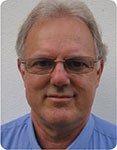
Chris Boreham is a principal research scientist at Geoscience Australia. He obtained his PhD in bio-inorganic chemistry from Australian National University, Canberra, Shortly afterwards, Chris joined the Bureau of Mineral Resources, Geoscience Australia’s predecessor as an organic geochemist. His research interests are in the application of biomarker, isotopic and kinetic tools in petroleum geochemistry and the biosphere-geosphere interface as it relates to alteration of petroleum and CO2. Presently, he splits his time between projects related to the geological storage of CO2 and the Australian Government’s New Energy Initiative, involved in understanding the petroleum potential in frontier areas of Australia. Chris.Boreham@ga.gov.au |
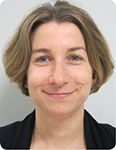
Emmanuelle Grosjean joined Geoscience Australia as an organic geochemist in 2005, and has since been involved in a number of studies focused on the petroleum prospectivity of Australia’s offshore basins. She received her PhD in organic chemistry from the University Louis Pasteur of Strasbourg, France, in 2002, and subsequently spent three postdoctoral years at the Massachusetts Institute of Technology, working on the Infracambrian petroleum systems of Oman. Emmanuelle.Grosjean@ga.gov.au |
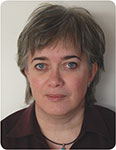
Jennifer Totterdell is project leader of Geoscience Australia’s Southern Frontiers Project. Since graduating from Australian National University, Jennie has worked on a range of regional, thematic and basin studies at Geoscience Australia. In the past 10 years, her work has focused on offshore frontier basins, notably the Bight, Arafura and Browse basins. Her main areas of interest are the structural and stratigraphic evolution and petroleum potential of the southern Australian margin. Member: PESA. Jennifer.Totterdell@ga.gov.au |
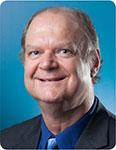
Thomas Bernecker is a sedimentologist/petroleum geologist who holds a MSc degree from the University of Aachen, Germany, and a PhD from Melbourne’s La Trobe University. After teaching undergraduate courses at the University of Melbourne, Thomas spent 10 years with the Victorian Department of Primary Industries, focusing on the petroleum geology and the hydrocarbon prospectivity of the Gippsland and Otway basins. Thomas joined Geoscience Australia in 2007, where he presently manages the Offshore Petroleum Acreage Release and Promotion project. Member: PESA, SEPM, and IAS. Tom.Bernecker@ga.gov.au |

Andrew Heap joined Geoscience Australia in April 2000 after completing his PhD at James Cook University. While at Geoscience Australia, he has led and managed pre-competitive geological studies for petroleum, CO2 storage, and environmental applications. Andrew is an experienced field geologist, with many years of sea-going experience as chief scientist leading multidisciplinary scientific research voyages all around Australia and New Zealand. A sedimentologist and geomorphologist by training, Andrew has published more than 70 peer-reviewed scientific papers and technical reports. At the moment Andrew is the Group Leader for Energy Systems at Geoscience Australia, responsible for the design and implementation of the Australian Government’s offshore and onshore pre-competitive petroleum program and management of the National Petroleum Data and Core Repository. Andrew.Heap@ga.gov.au |


